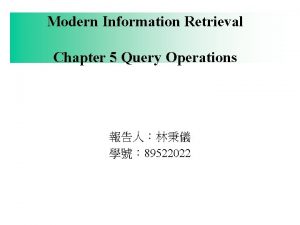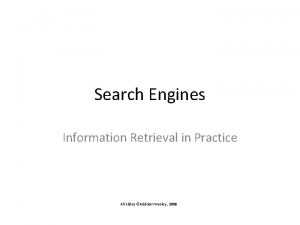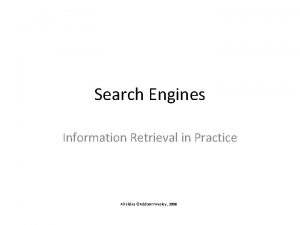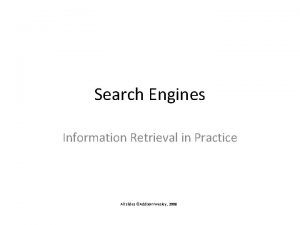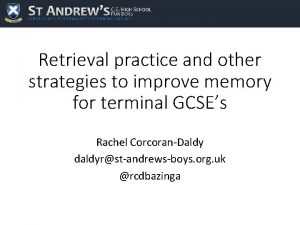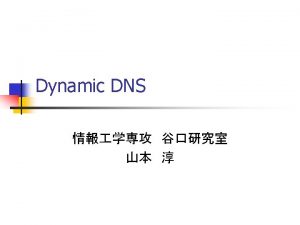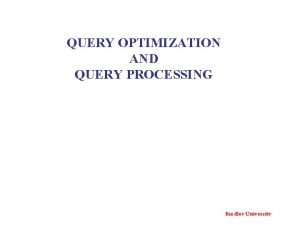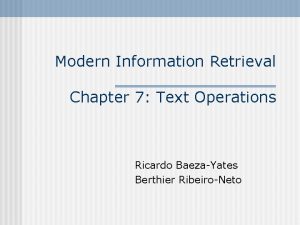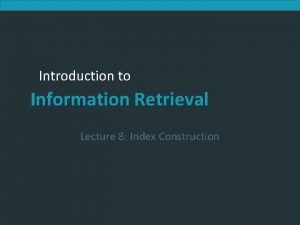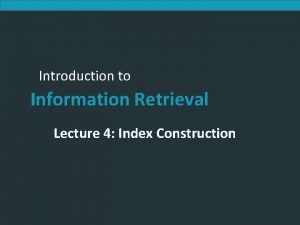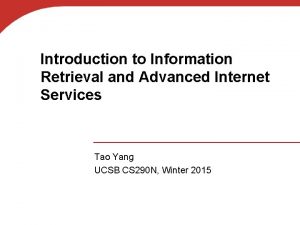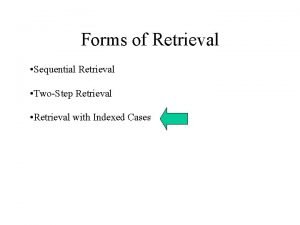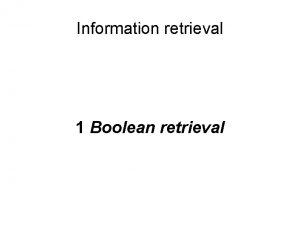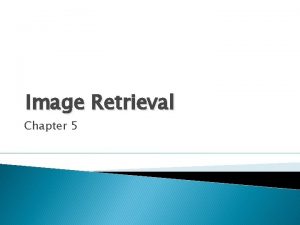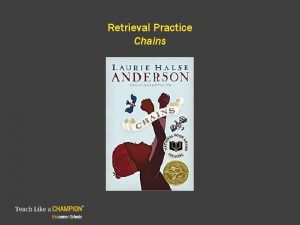Query Processing INFORMATION RETRIEVAL IN PRACTICE Query Processing


















- Slides: 18

Query Processing INFORMATION RETRIEVAL IN PRACTICE

Query Processing Document-at-a-time ◦ Calculates complete scores for documents by processing all term lists, one document at a time Term-at-a-time ◦ Accumulates scores for documents by processing term lists one at a time Both approaches have optimization techniques that significantly reduce time required to generate scores

Document-At-A-Time

Document-At-A-Time

Pseudocode Function Descriptions get. Current. Document() ◦ Returns the document number of the current posting of the inverted list. skip. Forward. To. Document(d) ◦ Moves forward in the inverted list until get. Current. Document() <= d. This function may read to the end of the list. move. Past. Document(d) ◦ Moves forward in the inverted list until get. Current. Document() < d. move. To. Next. Document() ◦ Moves to the next document in the list. Equivalent to move. Past. Document(get. Current. Document()). get. Next. Accumulator(d) ◦ returns the first document number d' >= d that has already has an accumulator. remove. Accumulators. Between(a, b) ◦ Removes all accumulators for documents numbers between a and b. Ad will be removed iff a < d < b.

Term-At-A-Time

Term-At-A-Time

Optimization Techniques Term-at-a-time uses more memory for accumulators, but accesses disk more efficiently Two classes of optimization ◦ Read less data from inverted lists ◦ e. g. , skip lists ◦ better for simple feature functions ◦ Calculate scores for fewer documents ◦ e. g. , conjunctive processing ◦ better for complex feature functions

Conjunctive Term-at-a-Time

Conjunctive Document-at-a-Time

Threshold Methods Threshold methods use number of top-ranked documents needed (k) to optimize query processing ◦ for most applications, k is small For any query, there is a minimum score that each document needs to reach before it can be shown to the user ◦ score of the kth-highest scoring document ◦ gives threshold τ ◦ optimization methods estimate τ′ to ignore documents

Threshold Methods For document-at-a-time processing, use score of lowest-ranked document so far for τ′ ◦ for term-at-a-time, have to use kth-largest score in the accumulator table Max. Score method compares the maximum score that remaining documents could have to τ′ ◦ safe optimization in that ranking will be the same without optimization

Max. Score Example Indexer computes μtree ◦ maximum score for any document containing just “tree” Assume k =3, τ′ is lowest score after first three docs Likely that τ ′ > μtree ◦ τ ′ is the score of a document that contains both query terms Can safely skip over all gray postings

Other Approaches Early termination of query processing ◦ ignore high-frequency word lists in term-at-a-time ◦ ignore documents at end of lists in doc-at-a-time ◦ unsafe optimization List ordering ◦ order inverted lists by quality metric (e. g. , Page. Rank) or by partial score ◦ makes unsafe (and fast) optimizations more likely to produce good documents

Distributed Evaluation Basic process ◦ All queries sent to a director machine ◦ Director then sends messages to many index servers ◦ Each index server does some portion of the query processing ◦ Director organizes the results and returns them to the user Two main approaches ◦ Document distribution ◦ by far the most popular ◦ Term distribution

Distributed Evaluation Document distribution ◦ each index server acts as a search engine for a small fraction of the total collection ◦ director sends a copy of the query to each of the index servers, each of which returns the top-k results ◦ results are merged into a single ranked list by the director Collection statistics should be shared for effective ranking

Distributed Evaluation Term distribution ◦ Single index is built for the whole cluster of machines ◦ Each inverted list in that index is then assigned to one index server ◦ in most cases the data to process a query is not stored on a single machine ◦ One of the index servers is chosen to process the query ◦ usually the one holding the longest inverted list ◦ Other index servers send information to that server ◦ Final results sent to director

Caching Query distributions similar to Zipf ◦ About ½ each day are unique, but some are very popular Caching can significantly improve effectiveness ◦ Cache popular query results ◦ Cache common inverted lists Inverted list caching can help with unique queries Cache must be refreshed to prevent stale data
 Query operations in information retrieval
Query operations in information retrieval Wild card queries in information retrieval
Wild card queries in information retrieval Search engines information retrieval in practice
Search engines information retrieval in practice Search engines information retrieval in practice
Search engines information retrieval in practice Search engines information retrieval in practice
Search engines information retrieval in practice Search engines information retrieval in practice
Search engines information retrieval in practice Retrieval practice cpd
Retrieval practice cpd Retrieval practice
Retrieval practice Iterative vs recursive dns
Iterative vs recursive dns Query tree and query graph
Query tree and query graph Query tree and query graph
Query tree and query graph What is sequential search
What is sequential search Information retrieval architecture
Information retrieval architecture What is precision and recall in information retrieval
What is precision and recall in information retrieval Text operations in information retrieval
Text operations in information retrieval Skip pointers
Skip pointers Index construction in information retrieval
Index construction in information retrieval Index construction in information retrieval
Index construction in information retrieval Which internet service is used for information retrieval
Which internet service is used for information retrieval
